Connecting an external monitor to your laptop can enhance your workflow and boost your productivity; however, some users experience a frustrating problem with their laptops slowing down when an external monitor is connected. This can be due to various issues. This article will discuss what you can do when your laptop is slow when connected to a monitor.
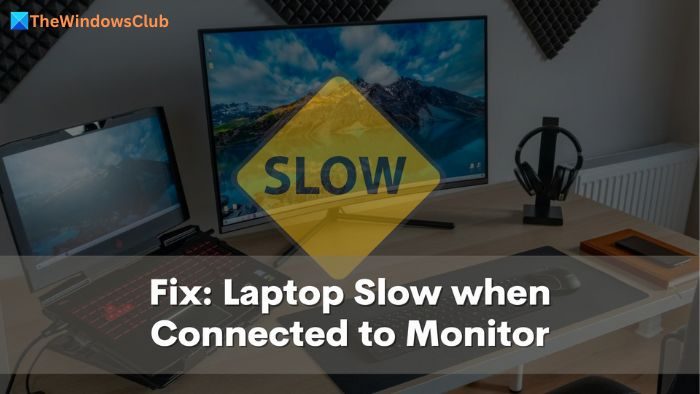
Why does a laptop slow down when connected to a monitor?
Here are some of the reasons why your laptop is slow when connected to an external monitor:
- Increased Workload: Running a secondary display on your laptop demands more from your GPU and CPU. You will run more apps simultaneously, causing your laptop to lag or slow down when connected to a monitor.
- Graphics Card Limitations: Integrated graphics cards (commonly found in laptops) are less capable than dedicated GPUs for multi-display setups, so if you have an integrated GPU on your laptop or haven’t switched to a dedicated GPU for the secondary monitor, such issues will arise.
- Incorrect Display Settings: The computer may slow down if the refresh rates or other display settings on your laptop and the monitor do not match.
- Hardware Limitations: If your laptop has a slow and aging processor, it cannot handle multi-tasking well, causing it to lag when connected to an external monitor.
Fix Windows Laptop slow when connected to monitor
This section will examine a few fixes for a laptop’s slowness when connected to a monitor. Here’s all that’s covered:
- Switch to Hybrid Graphics or Discrete Graphics Mode
- Check for Compatibility Issues
- Change Screen Refresh Rate
- Turn off Integrated Graphics
- Change Display Mode
You may need an administrator account for some of these.
1] Use a Dedicated GPU for the Monitor
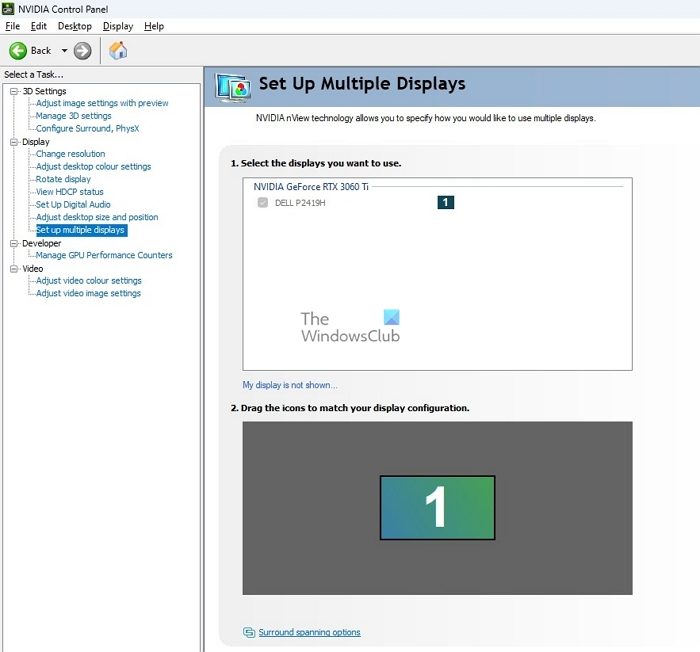
If your laptop also has a dedicated GPU, assigning a GPU for the monitor is recommended. The integrated GPU’s primary focus is on power saving and optimization, while the GPU works to boost performance and optimal speed.
- Open the NVIDIA Control Panel.
- Navigate to Setup Multiple Displays
- Select the monitor under the graphics card.
2] Check for Compatibility Issues
One of the main reasons your laptop may get slowed when connected to an external monitor is that it does not meet the minimum hardware requirements for that monitor. If your external monitor is set to too high a resolution for your laptop, lower it. Additionally, if the connection ports don’t match up, your laptop only supports a C-type display output, and your monitor only supports an HDMI-in or vice versa. In this case, ensure high-quality wires and adapters so the large is negligible.
Read: Laptop slow and lagging when charging
3] Change Screen Refresh Rate
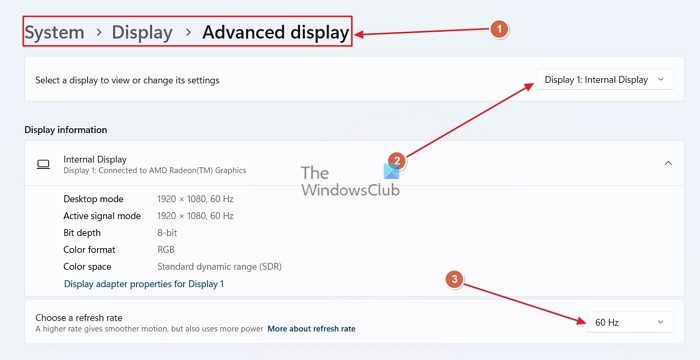
Suppose your laptop or graphics card is not powerful enough to handle your monitor’s high refresh rate. In that case, lowering the refresh rate on your external monitor can alleviate the performance issues:
- Right-click in an empty area on the desktop and open Display Settings from the context menu.
- Now, please scroll down to find Advanced Display settings and open it.
- Select the external monitor from the display list.
- Change the refresh rate to a lower one (e.g., from 120 Hz to 60 Hz)
4] Turn off Integrated Graphics
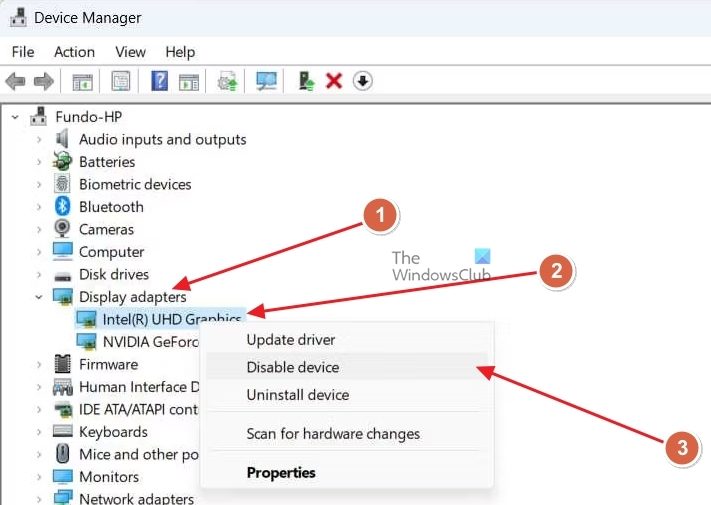
Turning off integrated graphics will prevent the external and primary displays from using the integrated graphics card. This will ensure optimal performance of your laptop when connected to an external display:
- Open the Device Manager by searching for it in the Windows start menu.
- In the Device Manager, find the Display Adapters option and expand it.
- Now, right-click the integrated graphics card driver and click on Disable device.
5] Change Display Mode
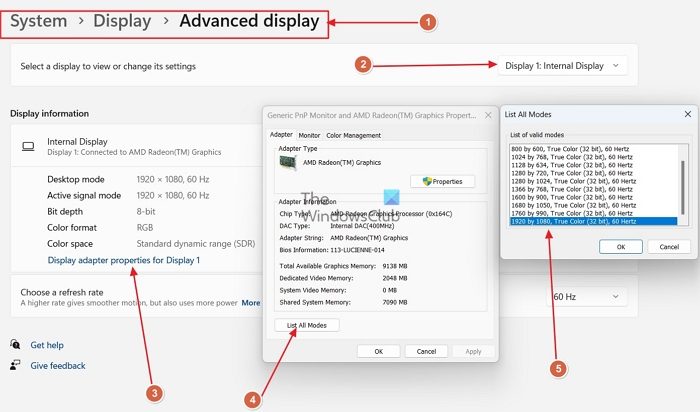
Changing Display Mode can ensure the right combination of display configurations for the external. If you are facing lag issues on your laptop when connected to a monitor, the correct display mode can fix it:
- Right-click an empty area on the desktop and open Display Settings.
- In the Display settings, open Advanced Display.
- Now, select the external monitor from the list of displays and open the Display Adapter Properties.
- From the window that opens, click on the List all modes option and experiment with a few modes to find the one that works best.
We hope the article was easy to follow and that you can fix the laptop’s slowness when connected to the monitor issue.
Read: Laptop slow even after Formatting or Factory Reset
Does connecting your laptop to a monitor affect performance?
Adding an external monitor can significantly enhance your laptop’s performance, particularly for gaming purposes. Laptops usually have weaker graphics to conserve battery life. However, by connecting a monitor, especially through dedicated ports, the workload can be shifted to the more powerful dedicated graphics card, resulting in smoother performance.
Does using 2 monitors reduce FPS?
Using two monitors can slightly decrease your computer’s FPS. The graphics card has to render both screens, which increases its workload. This is not usually a problem for static images or documents, but it can cause a bigger FPS drop in demanding programs like games. More powerful graphics cards handle this better, but for competitive gaming, closing other programs or disabling the second monitor can improve performance.
Leave a Reply